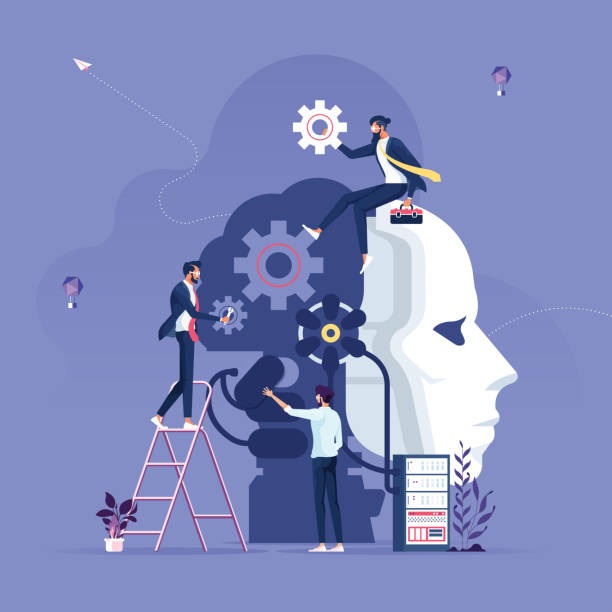The Differences Between Artificial Intelligence and Robotics
Introduction
Artificial intelligence (AI) and robotics are two cutting-edge fields that have revolutionized various industries. While they may seem similar at first glance, there are distinct differences between the two. In this article, we will explore the key disparities between artificial intelligence and robotics, shedding light on their unique characteristics, applications, and the impact they have on our lives.
What is Artificial Intelligence?
Artificial intelligence refers to the simulation of human intelligence in machines that are programmed to mimic cognitive processes. These machines are designed to learn from and adapt to their experiences, enabling them to perform tasks that would typically require human intelligence. AI encompasses a range of techniques and technologies, including machine learning, natural language processing, computer vision, and expert systems.
What is Robotics?
Robotics, on the other hand, focuses on the design, creation, and operation of robots. A robot is a mechanical device that is programmable and capable of carrying out tasks autonomously or semi-autonomously. Robotics combines various engineering disciplines, such as mechanical engineering, electrical engineering, and computer science, to create machines that can interact with their environment and perform specific functions.
The Differences Between Artificial Intelligence and Robotics
1. Nature of Intelligence
Artificial intelligence primarily deals with the intelligence aspect of machines. It involves developing algorithms and models that enable machines to learn, reason, and make decisions based on data and patterns. AI systems are designed to analyze vast amounts of information, extract insights, and make predictions or recommendations.
On the other hand, robotics focuses on the physical embodiment of machines. It involves creating physical systems that can interact with the world through sensors and actuators. Robotics combines AI techniques with mechanical engineering to build machines that can perceive their environment, manipulate objects, and perform tasks with physical dexterity.
2. Application Scope
AI finds applications in a wide range of domains, including healthcare, finance, transportation, and entertainment. AI-powered systems can automate repetitive tasks, assist in medical diagnoses, drive autonomous vehicles, recommend personalized content, and even create artwork. The versatility of AI allows it to be applied to various industries, making it a transformative technology.
Robotics, on the other hand, finds applications in areas that require physical interaction with the environment. Industrial robots are commonly used in manufacturing to automate assembly lines and perform repetitive tasks with precision. Robotic systems also find applications in space exploration, healthcare, agriculture, and defense. Their ability to navigate complex environments and manipulate objects makes them valuable tools in these fields.
3. Design and Development Process
The design and development process for AI systems mainly involves data analysis, algorithm development, and model training. AI engineers collect and preprocess data, design algorithms that can extract meaningful insights from the data, and train models using machine learning techniques. The performance of AI systems heavily relies on the quality and diversity of the data used for training.
In contrast, robotics requires a multidisciplinary approach. The process includes designing the physical structure of the robot, selecting appropriate sensors and actuators, integrating control systems, and programming the robot’s behavior. Roboticists combine principles from mechanical engineering, electronics, and computer science to create functional and efficient robots.
4. Ethical Considerations
As AI becomes more advanced and integrated into various aspects of our lives, ethical considerations arise. Issues such as data privacy, bias in algorithms, job displacement, and the ethical use of AI in warfare are subjects of ongoing discussions. Ensuring the responsible and ethical development and deployment of AI systems is crucial for the well-being of society.
Robotics, although not exempt from ethical concerns, has different considerations. As robots become more autonomous and capable, questions arise regarding their impact on employment, safety, and human-robot interaction. Addressing these concerns requires a comprehensive approach that considers the potential risks and benefits of robotic technologies.
5. Human Interaction
AI systems primarily interact with humans through interfaces such as voice assistants, chatbots, and recommendation systems. These systems aim to provide efficient and personalized interactions, understanding human language and behavior. The goal is to create seamless user experiences and augment human capabilities.
In contrast, robotics focuses on physical interaction with humans and the environment. Social robots are designed to engage in human-like interactions, assisting with tasks, providing companionship, or even acting as therapeutic aids. Human-robot interaction research aims to develop robots that can understand and respond to human emotions, intentions, and gestures.
FAQs
- Is artificial intelligence the same as robotics? No, while there are overlaps, artificial intelligence, and robotics are distinct fields. AI focuses on developing intelligent algorithms, while robotics deals with the design and creation of physical machines.
- Can robots think like humans? While robots can simulate human-like behaviors and make decisions based on algorithms, they do not possess human consciousness or subjective experience.
- Are all AI systems robotic? No, not all AI systems are robotic. AI can be implemented in software applications without physical embodiments, such as virtual assistants or recommendation systems.
- What are the risks of AI and robotics? Risks associated with AI and robotics include job displacement, ethical considerations, privacy concerns, safety risks, and potential biases in algorithms.
- How are AI and robotics transforming industries? AI and robotics are transforming industries by automating tasks, improving efficiency and accuracy, enabling new services, and driving innovation in various sectors.
- What are the future prospects of AI and robotics? The future prospects of AI and robotics are vast. AI will continue to advance, enabling more sophisticated applications, while robotics will become more capable, versatile, and integrated into our daily lives.
Artificial Intelligence and Robotics Conclusion
In conclusion, artificial intelligence and robotics are distinct but interconnected fields. AI focuses on developing intelligent algorithms that enable machines to learn, reason, and make data-based decisions. Conversely, robotics involves creating physical systems that can interact with the environment and perform tasks autonomously. Both AI and robotics have transformative potential and are poised to shape the future of technology and society.
